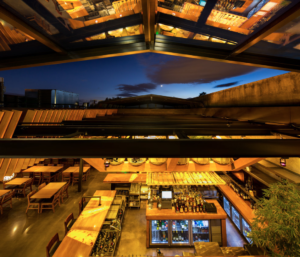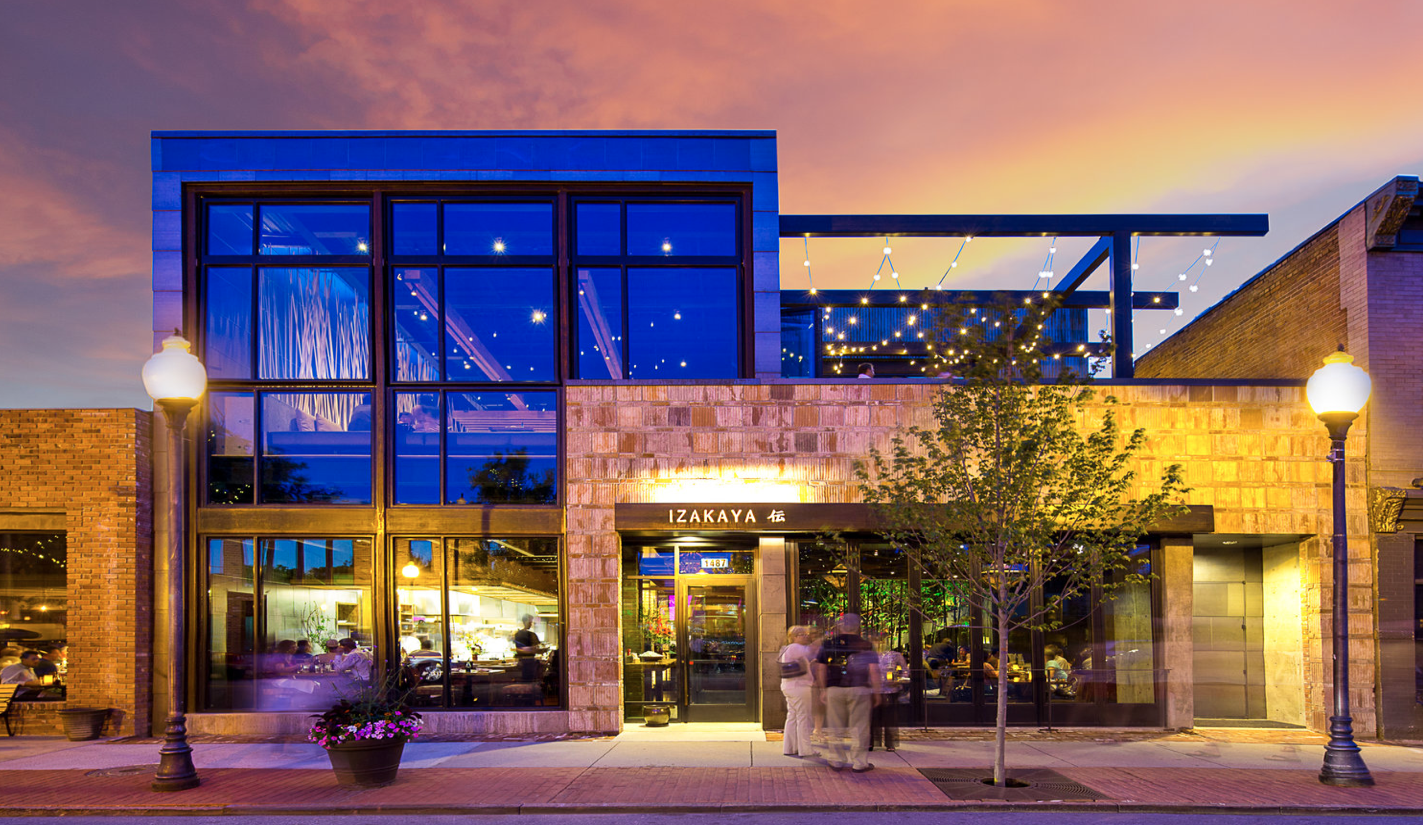 Adam Harding, AIA, LEED® AP is partner at Roth Sheppard Architects, a nationally-recognized Denver architecture firm, known for its award-winning restaurant, retail and law enforcement design throughout the West. Adam received his degree in Environmental Design from the University of Colorado at Boulder in 2000. He joined Roth Sheppard in 2004, and was recognized by both the American Institute of Architects’ Colorado Chapter and the six state Western Mountain Region with their 2015 Young Architect of the Year honor award for exceptional leadership. Adam also acts as an IDP supervisor, a mentor to CU Denver students and colleagues, and most recently was named AIA Colorado president-elect.
Adam Harding, AIA, LEED® AP is partner at Roth Sheppard Architects, a nationally-recognized Denver architecture firm, known for its award-winning restaurant, retail and law enforcement design throughout the West. Adam received his degree in Environmental Design from the University of Colorado at Boulder in 2000. He joined Roth Sheppard in 2004, and was recognized by both the American Institute of Architects’ Colorado Chapter and the six state Western Mountain Region with their 2015 Young Architect of the Year honor award for exceptional leadership. Adam also acts as an IDP supervisor, a mentor to CU Denver students and colleagues, and most recently was named AIA Colorado president-elect.
Facts about Adam:
- He became licensed as an architect in 2011 at the age of 29
- He was instrumental in the design of Blue Moon Brewery in RiNo and Izakaya Den on Pearl Street
- He is learning to play the Ukulele, enjoys painting in his free time and “geeking out” on leadership/professional development books.
What sparked your interest in architecture?
I have always had this artistic creative itch, loved drawing, painting, and building with Legos. Being creative makes me feel alive, like I am producing something of value. I knew I wanted to do something to keep that passion alive. It wasn’t until I was in high school though that I started to think about the career of architecture. When I was accepted to the University of Colorado Environmental Design program, I really had no clue about architecture at that point. I remember my first studio assignment was to find a picture of a façade to study and I had to go up to the instructor and ask him what a façade was. Haha. But I knew that I was drawn to architecture at a very young age. The amazing way spaces can make you feel and wonder and change your perspective.
What is your approach to architecture?
My approach sounds simple, but it is key to a great project. I first listen. I listen to every want, wish and desire for the project. Then I research. I research the place, the history, the context, the people, the brand, the spirit. I gather as much information as I possibly can. I then distill that into a concept that is based on a meaningful design. Ultimately my goal is to be a storyteller though design. Every decision that is made is layered with meaning and adds value to the story of the project. It creates a unique branded architectural design that creates a sense of place. I believe in creating a better world through meaningful design. To be an effective architect is to be a poet. But unlike poets, who have the luxury of using words to communicate, architects must convey meaning, context, and history through creative, intentional, meaningful design. As master storytellers, effective architects use design as a platform to catalyze and drive positive change. Never stagnant, they are continuous leaders, teachers, and learners.
What do you love most about restaurant design?
Restaurant design is amazing because you are able to create a concept that speaks to the food, the place, the people, the atmosphere, it can be serious or it can be light and fun! The possibilities are endless on where you take it. But it all stems from the approach and process that we have established. We have a client right now who loves the Big Lebowski, the restaurant concept isn’t about the movie at all. It really is all about the spirit of the place and food that is being served, but we are having fun layering in these subtle Easter Eggs throughout the design that have nods to the movie. You wouldn’t know they were there unless someone told you. It is the layering of meaningful design that you can then tell a story, people connect with story, it is ingrained in our DNA through evolution.

What are some of the most exciting Denver projects you’ve been involved in recent years?
My greatest love is the Izakaya Den Restaurant, it transports you to another place. The stories that are weaved throughout the design create this magical atmosphere. The way the building opens and breaths with the seasons. The progression from the first level to the second through the bamboo garden. The raw natural materials aging and becoming even more beautiful over time. This is the essence of the concept of Wabi Sabi that is infused throughout the project. Everything has a reason and a why. Another favorite is the Blue Moon Brewery in RiNo. An architectural branded identity was defined by the creative use of local and authentic materials throughout to craft a space that feels timeless, fun and memorable. The building connects to the past, but has created a modern space which speaks to the artfully crafted beers that are brewed with imagination and a spark of creativity inside.
How has your involvement with AIA impacted your career?
My involvement in AIA has been instrumental in my career. It has been the stepping stone to allow me to become a leader for our profession and my firm. I find that the more I give back in my career the more fulfilled I am with it. I’ve never wanted to just be a 9-5 architect. I want to elevate our profession. I want to advocate for meaningful design in our communities. I want the broader public to understand what we do and why it matters. Without architects our world would be bland and stale. We are the dreamers of spaces that add value to everyone’s lives. Without AIA, I don’t know how else I could do this. In regards to becoming the next President for AIA Colorado, I am excited about the possibilities. I am excited to connect with our members and our communities to create positive change throughout the state.
What are you looking forward to most in the coming year?
I am looking forward to telling the stories of our members. We need to spark the conversation about architecture in our communities. Why good architecture matters and why bad architecture should matter to people too. I am tired of architects not being at the table with the people that are making the decisions regarding the built environment. As architects, we have gone to school and trained to be the experts, yet our influence in what gets built is limited. We need to educate the masses on what is good and why and what is bad and why. Without a dialogue, how do people learn and have a voice to stand up for the what is being built in their communities. These buildings are to last for decades or longer, so why do we let bad development happen?
What do you see as the biggest challenge for architects in Colorado right now?
Our state is still growing rapidly, there are cranes all over the place. How do we as architects help tackle the big issues of sustainability or affordability? How do architects stay relevant in our communities and help guide and drive the conversation in a positive way? How do we advocate for a better built environment? We all love Colorado, so how do we work together to make it better.









